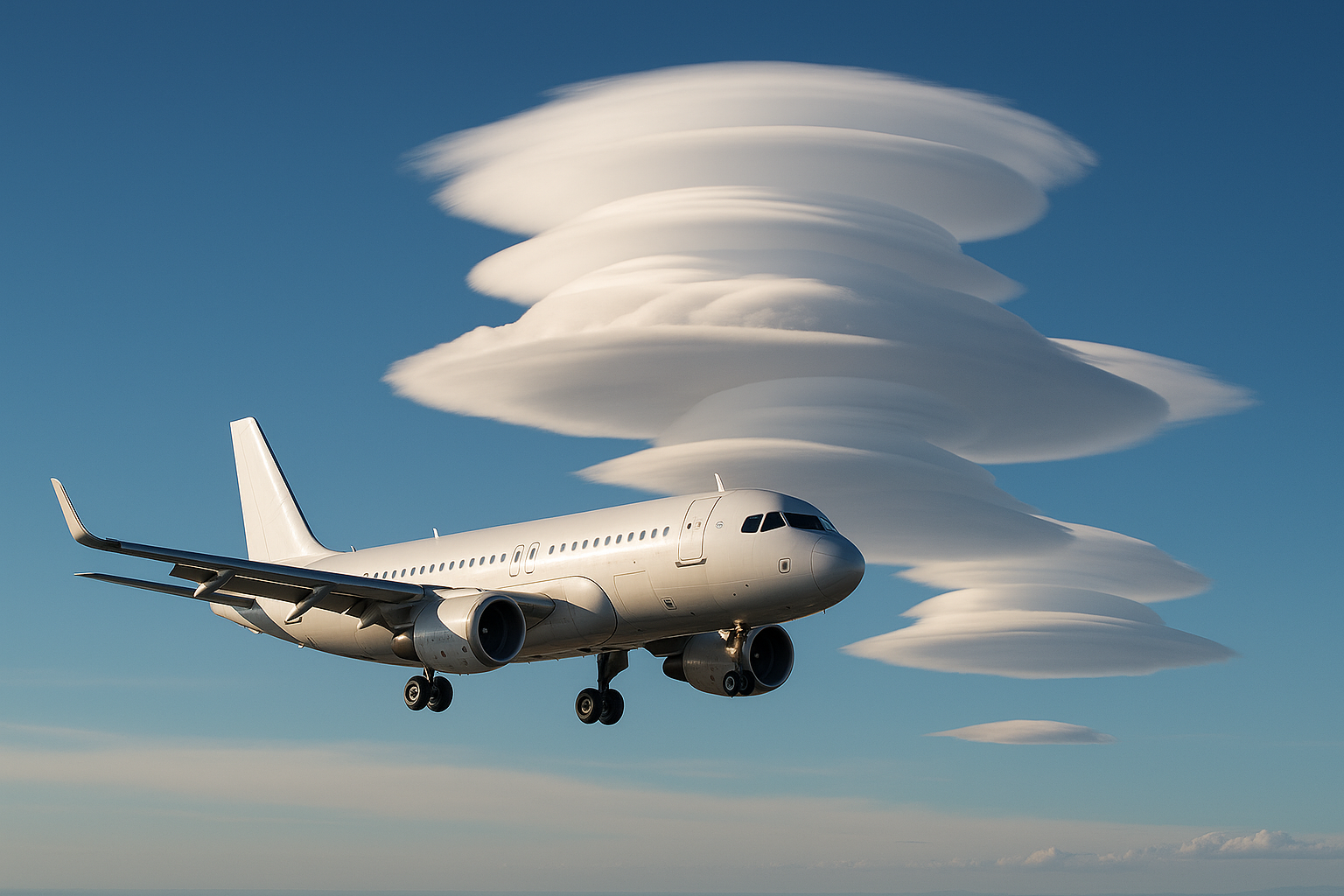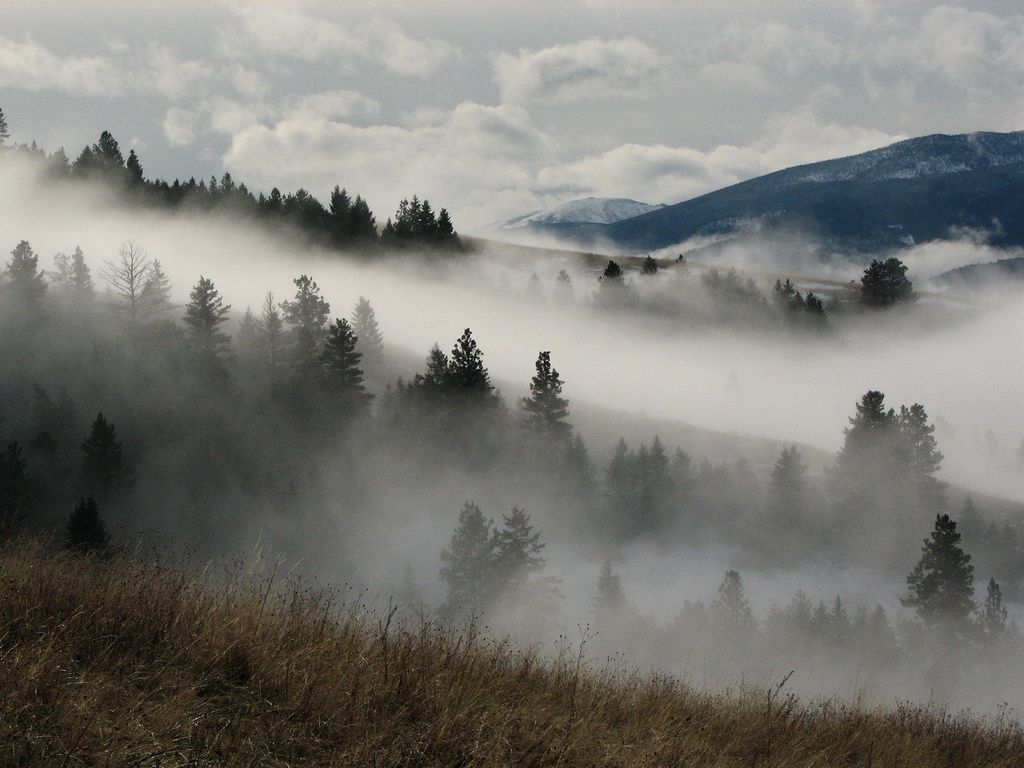Imagine gliding through the vast expanse of the sky, where the horizon stretches infinitely, and clouds form intricate patterns against the azure backdrop. Among these atmospheric formations, one type stands out, both in beauty and complexity: lenticular clouds. These fascinating structures captivate the eyes with their lens-like appearance, often resembling stacks of pancakes or UFOs hovering above the earth. 🌥️ However, beyond their visual allure, lenticular clouds hold significant implications for aviation, particularly in the context of turbulence. In this article, we will delve into the intriguing relationship between lenticular clouds and aviation turbulence, offering a comprehensive guide to understanding their impact on flight dynamics.
Lenticular clouds form when stable, moist air flows over a mountain range or other topographical barriers. As the air ascends the windward side of the barrier, it cools and condenses into these unique cloud formations, which are typically stationary and appear to hover in place. This phenomenon is not only a stunning natural display but also a crucial factor in aviation, where understanding weather patterns is paramount for ensuring safe and smooth flights.
So, why should we be concerned about lenticular clouds when it comes to flying? The answer lies in the atmospheric conditions that accompany their formation. Beneath these seemingly tranquil clouds lies a turbulent world of air currents and wind shear, which can pose challenges to even the most experienced pilots. As airplanes navigate through or near lenticular clouds, they can encounter sudden changes in wind speed and direction, leading to turbulence that can affect flight stability and passenger comfort.
The presence of lenticular clouds is often a signal to pilots and meteorologists that strong winds are at play, particularly in mountainous regions. These winds can create powerful waves of air, known as mountain waves, that extend far beyond the initial point of cloud formation. Understanding and predicting these patterns is essential for flight planning and risk assessment, making it a crucial aspect of meteorology in aviation.
Throughout this article, we will explore several key aspects of lenticular clouds and their impact on aviation. We will begin by examining the scientific principles behind their formation, unraveling the meteorological conditions that give rise to these clouds. From there, we will delve into the mechanics of mountain waves and their potential to generate turbulence, highlighting the challenges and considerations pilots face when flying in such conditions.
Furthermore, we will discuss the technological advancements and strategies used by the aviation industry to mitigate the risks associated with lenticular clouds. From advanced weather forecasting tools to pilot training programs, there is a concerted effort to enhance safety and improve the overall flying experience for passengers. We will also touch on real-life case studies and incidents where lenticular clouds have played a pivotal role in aviation turbulence, providing valuable insights into the practical implications of this atmospheric phenomenon.
As we navigate through the intricacies of lenticular clouds and their influence on aviation, it’s important to appreciate the delicate balance between nature and technology. While modern aircraft are equipped with sophisticated systems to handle turbulence, the unpredictable nature of weather continues to challenge our understanding and adaptability. 🌎 By gaining a deeper insight into these dynamic cloud formations, pilots and aviation professionals can better anticipate and respond to the challenges posed by turbulent skies.
Join us on this journey through the skies as we unravel the mysteries of lenticular clouds and their impact on aviation turbulence. Whether you’re an aviation enthusiast, a frequent flyer, or a curious learner, this exploration promises to equip you with a richer understanding of how weather phenomena shape the world of flight. Fasten your seatbelts and prepare for an engaging ride into the world of aviation meteorology, where the clouds tell stories and the skies are full of surprises.

Conclusão: Navegando os Céus com Segurança 🚀
Ao concluir nossa exploração sobre o impacto das nuvens lenticulares na turbulência da aviação, é essencial refletir sobre os principais pontos discutidos ao longo do artigo. Primeiramente, elucidamos o que são as nuvens lenticulares e como elas se formam. Estas nuvens em forma de lente surgem principalmente sobre regiões montanhosas, quando o ar úmido é forçado a subir rapidamente, esfriando e condensando a umidade em nuvens. Este fenômeno, enquanto visualmente deslumbrante, traz consigo desafios para a aviação, principalmente na forma de turbulência significativa.
Compreendemos, em segundo lugar, como a formação dessas nuvens pode indicar condições atmosféricas complexas. A presença de lenticulares é frequentemente associada a fortes ventos e correntes de ar, resultando em áreas de turbulência severa. Para os pilotos, o conhecimento e a antecipação desses sinais meteorológicos são cruciais para a segurança dos voos. A capacidade de identificar e evitar essas áreas pode reduzir o desconforto dos passageiros e, mais importante, garantir a segurança de todos a bordo.
Além disso, abordamos como a tecnologia moderna e os avanços na meteorologia têm contribuído significativamente para mitigar os riscos associados às nuvens lenticulares. As aeronaves de hoje são equipadas com sistemas avançados de radar meteorológico que podem detectar turbulências com antecedência, permitindo ajustes de rota e altitude. Ferramentas como o Sistema de Relatórios Automáticos de Meteorologia em Voo (AIREP) fornecem dados em tempo real sobre as condições climáticas aos controladores de tráfego aéreo e outros pilotos na área.
Outro aspecto importante é o treinamento contínuo dos pilotos em relação à leitura e interpretação de sinais meteorológicos. A habilidade de interpretar corretamente as informações e tomar decisões rápidas e informadas é fundamental para enfrentar as condições adversas que as nuvens lenticulares podem trazer. O investimento em treinamento de simulação de turbulência se mostra essencial para preparar pilotos para esses desafios.
Por fim, destacamos a colaboração internacional entre agências meteorológicas, companhias aéreas e organizações de aviação civil, que desempenha um papel vital na troca de informações e na formulação de diretrizes de segurança. Esta cooperação contínua ajuda a desenvolver tecnologias melhores e práticas mais eficazes para lidar com os efeitos das nuvens lenticulares e outras condições climáticas adversas.
Reforçamos a importância desse tema não apenas para o setor da aviação, mas para todos que, direta ou indiretamente, dependem do transporte aéreo. A segurança nos céus é uma prioridade que requer o esforço conjunto de cientistas, engenheiros, pilotos e reguladores. Ao entender e abordar os desafios apresentados pelas nuvens lenticulares, podemos garantir que as viagens aéreas permaneçam seguras e confortáveis para todos.
Incentivamos você, leitor, a compartilhar este conhecimento com amigos e colegas. Comente suas experiências ou opiniões sobre o tema, pois seu feedback é valioso para fomentar discussões enriquecedoras. Ao aplicar o que aprendeu, seja como profissional da aviação ou como um entusiasta do clima, você contribui para um entendimento mais amplo e aprofundado deste fenômeno fascinante. 🌍✈️
Para aprofundar seu conhecimento, sugerimos visitar alguns recursos adicionais confiáveis:
NOAA Weather e
EUROCONTROL. Estas fontes oferecem insights detalhados sobre as condições meteorológicas e suas implicações para a aviação.
Agradecemos por nos acompanhar nesta jornada pelos céus e esperamos que tenha encontrado valor e inspiração nas informações compartilhadas. Vamos juntos continuar explorando os céus com segurança e conhecimento!
Toni Santos is a visual storyteller and artisan whose creations celebrate the poetry of the natural world. Through his thoughtful artistic lens, Toni captures the elegance of botanical forms, transforming them into meaningful expressions of symbolism, resilience, and timeless beauty.
His journey is deeply rooted in a passion for flora and the mysteries they carry. From the shape of a petal to the curve of a vine, each design Toni brings to life reflects a deeper narrative — one of growth, transformation, and harmony with nature. Whether crafting symbolic floral jewelry, enchanted botanical illustrations, or seasonal visual studies, Toni’s work evokes the quiet magic found in Earth’s most delicate details.
With a background in handcrafted artistry and visual design, Toni blends technique with intention. His creations do more than decorate — they speak, often inspired by ancient meanings behind flowers, the cycles of the seasons, and the invisible bonds between nature and spirit.
As the creative voice behind Vizovex, Toni shares this botanical journey with the world, offering curated stories, handcrafted collections, and thoughtful articles that help others reconnect with nature’s symbolism and artistic essence.
His work is a tribute to:
The quiet power of flowers and their messages
The art of visual symbolism in everyday life
The beauty of slowing down to see what’s hidden in plain sight
Whether you’re an artist, a nature lover, or someone drawn to the deeper meanings behind the natural world, Toni welcomes you to explore a space where aesthetics meet soul — one petal, one story, one creation at a time.





